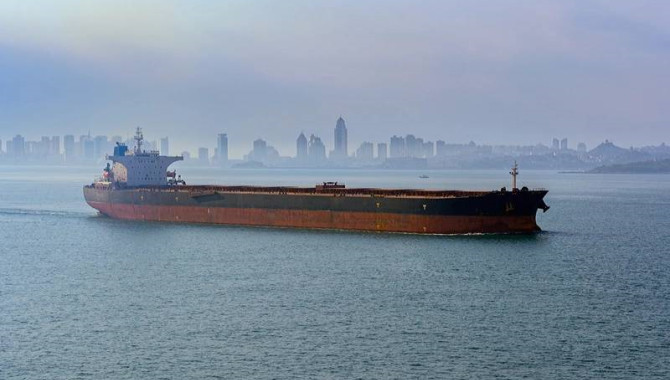
China's gross domestic product numbers tend to spark debate as to whether they are an accurate reflection of the true state of growth in the world’s second-biggest economy. The robust trend in commodity imports suggests they are.
China's GDP expanded 4.9% in the third quarter, after rising 3.2% in the second, according to official data released on Monday.
This was worse than a Reuters poll ahead of the data, which forecast quarterly GDP would expand by 5.2%.
However, other economic data released on Monday show the economic recovery appears fairly broad-based, with retail sales growing 3.3% in September from a year earlier, speeding up from a modest 0.5% rise in August and posting the fastest growth since December 2019.
Industrial output grew 6.9% in September after a 5.6% rise in August, while fixed-asset investment rose 0.8% in the first nine months from a year earlier, after dipping 0.3% in the first eight months.
China's economic data is sometimes greeted sceptically by analysts, who question whether the numbers are massaged in order to fit the prevailing narrative of the country’s authoritarian Communist Party rulers.
Perhaps a better way to use the data is to focus less on the actual numbers, and more on the trends and movements in the data, something that gives insight into where the economy has been and where it is most likely heading.
In that case, what the latest tranche of economic numbers show is that China is achieving the much-vaunted V-shaped recovery from the novel coronavirus pandemic.
The outbreak was first detected in the Chinese city of Wuhan late last year, and its initial spread resulted in much of China being placed in lockdowns in the first quarter, and into the second quarter.
However, China’s strict and strictly enforced lockdowns appear to have contained the spread of the coronavirus, allowing the country to restart its economy and undertake massive stimulus spending.
But perhaps the most supportive data for China’s economic recovery is imports of major commodities, with the world’s biggest buyer of natural resources seemingly single-handedly holding up the sector.
While imports of crude oil, up 12.7% in the first nine months of the year to the equivalent of 11.12 million barrels per day, are the standout, there is a caveat.
Chinese refiners went on a massive buying spree of crude during the brief price war in April between the world’s leading exporters, Saudi Arabia and Russia, that sent global benchmark Brent crude futures to a 17-year low.
They bought so much crude that the last five months of imports have been the five strongest on record, such was the volume that arrived and the subsequent congestion at ports.
However, there are no such caveats when it comes to other major commodities, especially those exposed most to stimulus spending, such as iron ore and copper.
IRON ORE, COPPER STAR
Iron ore imports are up 10.8% in the first nine months of the year, compared to the same period in 2019, with 868.5 million tonnes arriving.
The increase came despite the coronavirus cutting shipments from Brazil and South Africa, the two biggest exporters behind Australia.
Imports of unwrought copper surged a massive 42% in the first nine months to 4.99 billion tonnes, and even imports of copper ores and concentrates increased by 2.3%, notwithstanding supply issues related to the coronavirus pandemic.
Among agricultural commodities, imports of soybeans have gained 15.5% in the first three quarters, perhaps as a result of China buying more from the United States as part of the so-called Phase 1 trade deal between Washington and Beijing.
But imports of rubber, both natural and synthetic, have increased by 14.1%, an increase unrelated to the trade deal with the United States.
China’s appetite for commodities is also reflected in prices, with those most exposed to China seeing the biggest gains.
Spot iron ore for delivery to north China MT-IO-QIN62=ARG, as assessed by commodity price reporting agency Argus, has risen 49.4% from its low in 2020 of $79.60 a tonne on March 23 to the Oct. 16 close of $118.95.
London-traded copper has leapt 54.2% from its low of $4,371 a tonne on March 19 to the close of $6,740 on Oct. 16.
The contrast to a commodity which China has been buying less of, namely coal, couldn’t be more stark.
China’s imports of both thermal coal, used for power generation, and coking coal, used to make steel, have dropped 4.4% in the first nine months of 2020 to 239.4 million tonnes.
This is largely viewed as a result of the world’s biggest coal producer, importer and consumer moving to protect its domestic industry during the coronavirus pandemic.
Benchmark Australian thermal coal at Newcastle port, as assessed by Argus, was $51.29 a tonne in the week to Oct. 16, down 26.3% from its year-to-date peak of $69.59 in the week of Jan. 17.
Coking coal futures on the Singapore Exchange have dropped 20.4% from their peak of $161.99 on March 3 to close at $129 on Oct. 16.
It appears the story for many commodities this year is the more exposed to China, the better.
Source:Reuters
The opinions expressed herein are the author's and not necessarily those of The Xinde Marine News.
Please Contact Us at:
media@xindemarine.com


 Ningbo Containerized Freight Index Weekly Commentar
Ningbo Containerized Freight Index Weekly Commentar  Ningbo Containerized Freight Index Weekly Commentar
Ningbo Containerized Freight Index Weekly Commentar  Ningbo Containerized Freight Index Weekly Commentar
Ningbo Containerized Freight Index Weekly Commentar  BIMCO Shipping Number of the Week: Bulker newbuildi
BIMCO Shipping Number of the Week: Bulker newbuildi  Ningbo Containerized Freight Index Weekly Commentar
Ningbo Containerized Freight Index Weekly Commentar  Ningbo Containerized Freight Index Weekly Commentar
Ningbo Containerized Freight Index Weekly Commentar